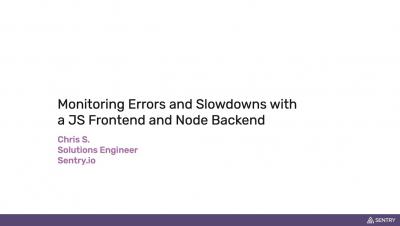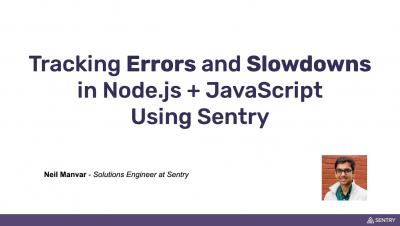DevOps.JS Workshop: Tracking errors and slowdowns across JS applications using Sentry
Join Simon Zhong, Sentry Sales Engineer, as he goes through setting up Sentry step-by-step to get visibility into our frontend and backend. Once integrated, he will track and triage errors + transactions surfaced by Sentry from our services to understand why/where/how errors and slowdowns occurred within our application code. This workshop took place live at DevOps.JS Conference on March 21, 2022.











